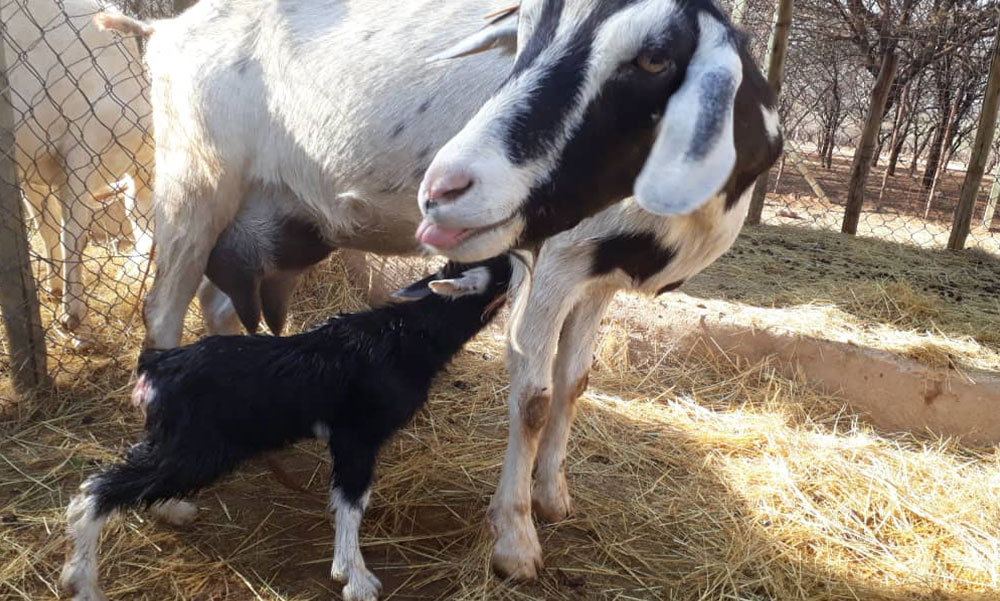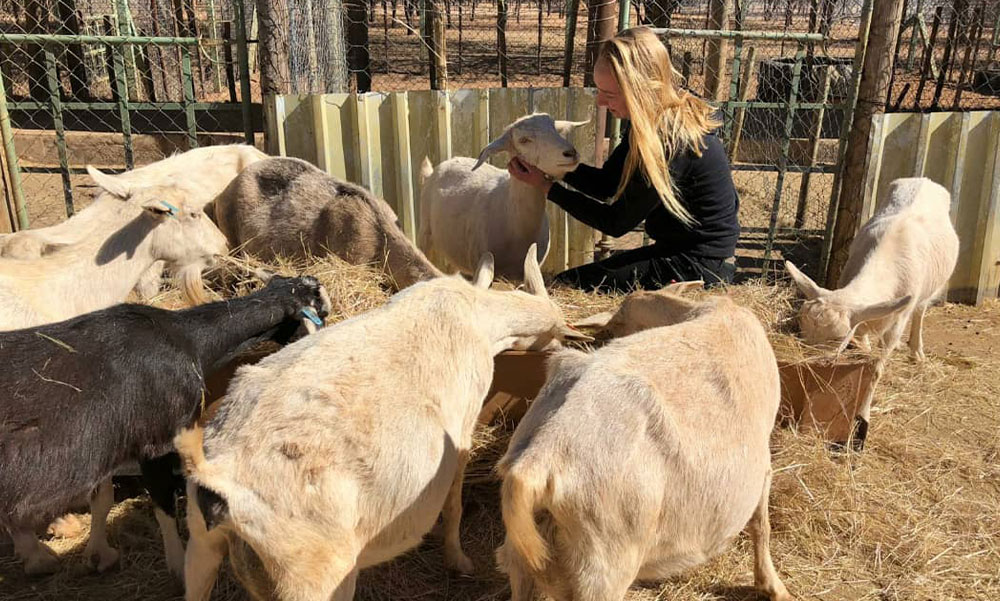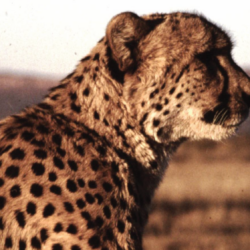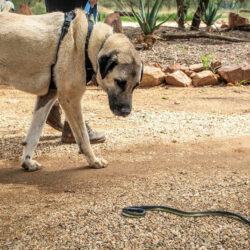Kidding Season At CCF
-

- by Emma Reasoner August 3, 2020

Every morning after the sun rises, when the air is still cool, I walk through the goat kraal. I find my favorite goat, Snow. She is completely white, with sparkling, watchful eyes and a whirl of soft hair curling on her forehead. I take note of her growing belly. She’s now only two weeks from giving birth. Goat kidding season at CCF will begin in early August, and last about a month.
CCF’s small stock team is busy preparing for this upcoming season. Snow is one of 45 dairy does currently pregnant. Goats most commonly give birth to twins (and occasionally even triplets) which means we can expect close to 100 goat kids to be born in the next four weeks.
The kids stay with their mothers for about 5 days after they are born. During this critical period, they nurse their mother’s colostrum, the most important milk they will ever receive, which contains vitamins, minerals, and maternal antibodies to protect them from disease. After 5 days, we begin bottle feeding them by hand. This allows us to start milking the does again, maximizing the amount of milk we can use so that none goes to waste. It also allows us to keep a close eye on each kid and make sure they are healthy and getting enough milk. Bottle feeding continues until the goat kids are three months old, when we wean them and they join the adult herd.


Kidding and bottle-feeding season are a hectic time for CCF’s small stock team. Many of us work around the clock, forgoing our days off and sacrificing sleep to make sure all of the goats are well cared for. Sometimes, weaker kids may require additional attention. We take these kids to our houses at the end of the work day, where they sleep next to our beds so we can closely monitor them throughout the night. Days end late and start early.
CCF’s dairy goat herd is part of its Model Farm, which functions as a blueprint for Namibian farmers. We use our farm to train local communities about improved livestock management, animal health, and mitigation of livestock loss to predators such as cheetahs and leopards. CCF’s dairy and Dancing Goat Creamery (where we process our goats’ milk to make cheese, ice cream, soap, and other products) model another option for a source of income and livelihood for Namibian farmers. Our goal is to manage CCF’s Model Farm as a prototype of profitable and conservation-minded livestock management.

While living and working at CCF, I’m pursuing a master’s degree focused on Human-wildlife conflict in Namibia. My research explores how farmers manage their livestock while facing the threat of predators. It’s so special to conduct this research while also helping to manage CCF’s own farm and experience firsthand what goes into caring for livestock in this challenging environment.
Right now, our focus is on making sure the pregnant does are well-fed, healthy, and comfortable. Every morning as I look over the herd, I make sure every doe looks happy and healthy. Little things like checking the herd’s health daily make a big difference in ensuring a successful kidding season.
My favorite goat Snow walks over to me, her pregnant belly swaying slightly. She asks with her nuzzling nose if I have any grain for her. With her bright, peaceful gaze, she lets me know she is content.
Related Reading
-
December 4, 2024
Double Your Donation for the Cheetah -
June 15, 2024
Snake Aversion Training




